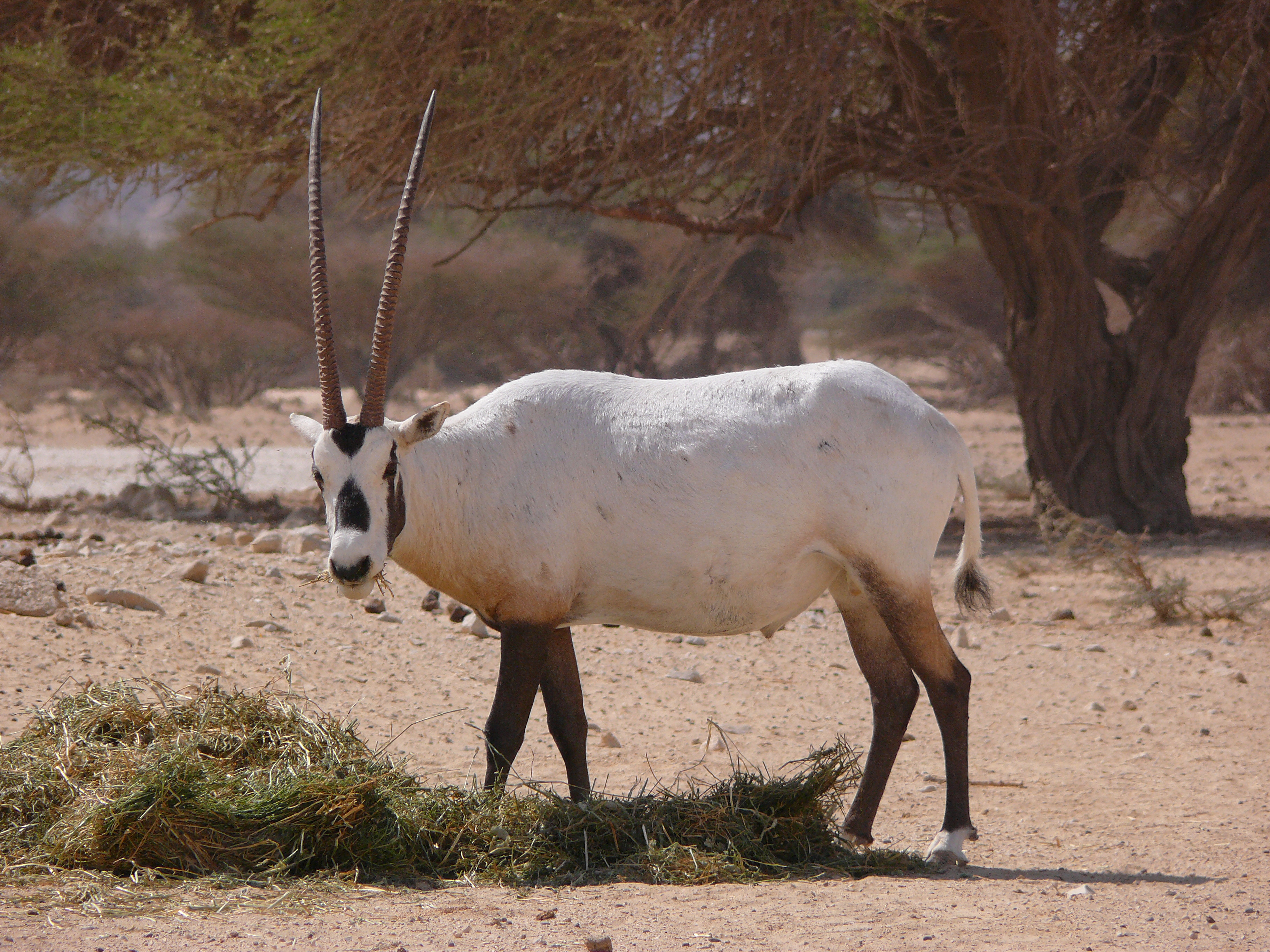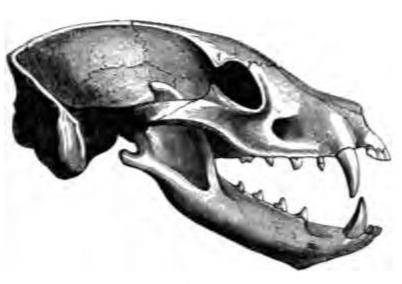|
Numbat
The numbat (''Myrmecobius fasciatus''), also known as the noombat or walpurti, is an insectivorous marsupial. It is diurnal and its diet consists almost exclusively of termites. The species was once widespread across southern Australia, but is now restricted to several small colonies in Western Australia. It is therefore considered an endangered species and protected by conservation programs. Numbats were recently re-introduced to fenced reserves in South Australia and New South Wales. The numbat is the faunal emblem of Western Australia. Taxonomy The numbat genus ''Myrmecobius'' is the sole member of the family Myrmecobiidae, one of four families that make up the order Dasyuromorphia, the Australian marsupial carnivores. The species is not closely related to other extant marsupials; the current arrangement in the order Dasyuromorphia places its monotypic family with the diverse and carnivorous species of Dasyuridae. Genetic studies have shown the ancestors of the num ... [...More Info...] [...Related Items...] OR: [Wikipedia] [Google] [Baidu] |
Dasyuromorphia
Dasyuromorphia (, meaning "hairy tail" in Greek) is an order comprising most of the Australian carnivorous marsupials, including quolls, dunnarts, the numbat, the Tasmanian devil, and the extinct thylacine. In Australia, the exceptions include the omnivorous bandicoots (order Peramelemorphia) and the marsupial moles (which are insectivorous but are very different and are now accorded an order of their own, Notoryctemorphia). Numerous South American species of marsupials (orders Didelphimorphia, Paucituberculata, and Microbiotheria) are also carnivorous, as were some extinct members of the order Diprotodontia, including extinct kangaroos (such as '' Ekaltadeta'' and '' Propleopus)'' and thylacoleonids, and some members of the partially extinct clade Metatheria and all members of the extinct superorder Sparassodonta. The order contains four families: one, the Myrmecobiidae, with just a single living species (the numbat), two with only extinct species (including the thylacine ... [...More Info...] [...Related Items...] OR: [Wikipedia] [Google] [Baidu] |
Species Reintroduction
Species reintroduction is the deliberate release of a species into the wild, from captivity or other areas where the organism is capable of survival. The goal of species reintroduction is to establish a healthy, Genetic diversity, genetically diverse, self-sustaining population to an area where it has been extirpated, or to augment an existing population. Species that may be eligible for reintroduction are typically Threatened species, threatened or endangered in the wild. However, reintroduction of a species can also be for pest control; for example, wolves being reintroduced to a wild area to curb an overpopulation of deer. Because reintroduction may involve returning native species to localities where they had been extirpated, some prefer the term "reestablishment". Humans have been reintroducing species for food and pest control for thousands of years. However, the practice of reintroducing for conservation is much younger, starting in the 20th century. Methods for sourcing i ... [...More Info...] [...Related Items...] OR: [Wikipedia] [Google] [Baidu] |
Marsupial
Marsupials are a diverse group of mammals belonging to the infraclass Marsupialia. They are natively found in Australasia, Wallacea, and the Americas. One of marsupials' unique features is their reproductive strategy: the young are born in a relatively undeveloped state and then nurtured within a pouch on their mother's abdomen. Extant marsupials encompass many species, including Kangaroo, kangaroos, Koala, koalas, Opossum, opossums, Phalangeriformes, possums, Tasmanian devil, Tasmanian devils, Wombat, wombats, Wallaby, wallabies, and Bandicoot, bandicoots. Marsupials constitute a clade stemming from the last common ancestor of extant Metatheria, which encompasses all mammals more closely related to marsupials than to Placentalia, placentals. The evolutionary split between placentals and marsupials occurred 125-160 million years ago, in the Middle Jurassic-Early Cretaceous period. Presently, close to 70% of the 334 extant marsupial species are concentrated on the Australian ... [...More Info...] [...Related Items...] OR: [Wikipedia] [Google] [Baidu] |
Termite
Termites are a group of detritivore, detritophagous Eusociality, eusocial cockroaches which consume a variety of Detritus, decaying plant material, generally in the form of wood, Plant litter, leaf litter, and Humus, soil humus. They are distinguished by their moniliform antennae and the soft-bodied, unpigmented worker caste for which they have been commonly termed "white ants"; however, they are not ants but highly Apomorphy and synapomorphy, derived cockroaches. About 2,997 extant species are currently described, 2,125 of which are members of the family Termitidae. Termites comprise the infraorder Isoptera, or alternatively the Taxonomic rank#All ranks, epifamily Termitoidae, within the order Blattodea (the cockroaches). Termites were once classified in a separate Order (biology), order from cockroaches, but recent phylogenetic studies indicate that they evolved from cockroaches, as they are deeply nested within the group, and the sister group to wood-eating cockroaches of t ... [...More Info...] [...Related Items...] OR: [Wikipedia] [Google] [Baidu] |
Insectivore
file:Common brown robberfly with prey.jpg, A Asilidae, robber fly eating a hoverfly An insectivore is a carnivore, carnivorous animal or plant which eats insects. An alternative term is entomophage, which can also refer to the Entomophagy in humans, human practice of eating insects. The first vertebrate insectivores were amphibians. When they evolved 400 million years ago, the first amphibians were piscivores, with numerous sharp conical teeth, much like a modern crocodile. The same tooth arrangement is however also suited for eating animals with exoskeletons, thus the ability to eat insects can stem from piscivory. At one time, insectivorous mammals were scientific classification, scientifically classified in an order (biology), order called Insectivora. This order is now abandoned, as not all insectivorous mammals are closely related. Most of the Insectivora taxa have been reclassified; those that have not yet been reclassified and found to be truly related to each ... [...More Info...] [...Related Items...] OR: [Wikipedia] [Google] [Baidu] |
George Robert Waterhouse
George Robert Waterhouse (6 March 1810 – 21 January 1888) was an English natural history, naturalist. He was a keeper at the department of geology and later curator of the Zoological Society of London's museum. Early life George was born in Somers Town to James Edward Waterhouse and Mary Newman. His father was a solicitor's clerk and an amateur entomologist. He was the brother of Frederick George Waterhouse, who also became a zoologist. George went to school at Koekelberg, near Brussels. He returned to England in 1824 and worked as an apprentice to an architect. Part of the work was in designing the garden of Charles Knight in the Vale of Health, Hampstead and the ornamentation for St. Dunstan's Church. Natural history George became interested in entomology through his father and he founded the Entomological Society of London along with Frederick William Hope in 1833 with himself as honorary curator. He became its president in 1849–50. He wrote articles for Knight's ''P ... [...More Info...] [...Related Items...] OR: [Wikipedia] [Google] [Baidu] |
Thylacinus Cynocephalus White Background
''Thylacinus'' is a genus of extinct carnivorous marsupials in the family Thylacinidae. The only recent member was the thylacine The thylacine (; binomial name ''Thylacinus cynocephalus''), also commonly known as the Tasmanian tiger or Tasmanian wolf, was a carnivorous marsupial that was native to the Mainland Australia, Australian mainland and the islands of Tasmani ... (''Thylacinus cynocephalus''), commonly also known as the Tasmanian tiger or Tasmanian wolf. The last known Tasmanian tiger was in the Beaumaris Zoo in Tasmania, eventually dying in 1936. The earliest known member of the genus, '' Thylacinus macknessi'' appeared during the Early Miocene, around 16 million years ago, and was smaller than the modern thylacine, with a body mass of about . ''Thylacinus'' represented the only extant genus of the family after the beginning of the Pliocene around 5 million years ago. Over time members of the genus saw an increase in body mass and a greater adaption to hypercarn ... [...More Info...] [...Related Items...] OR: [Wikipedia] [Google] [Baidu] |
Genome
A genome is all the genetic information of an organism. It consists of nucleotide sequences of DNA (or RNA in RNA viruses). The nuclear genome includes protein-coding genes and non-coding genes, other functional regions of the genome such as regulatory sequences (see non-coding DNA), and often a substantial fraction of junk DNA with no evident function. Almost all eukaryotes have mitochondrial DNA, mitochondria and a small mitochondrial genome. Algae and plants also contain chloroplast DNA, chloroplasts with a chloroplast genome. The study of the genome is called genomics. The genomes of many organisms have been Whole-genome sequencing, sequenced and various regions have been annotated. The first genome to be sequenced was that of the virus φX174 in 1977; the first genome sequence of a prokaryote (''Haemophilus influenzae'') was published in 1995; the yeast (''Saccharomyces cerevisiae'') genome was the first eukaryotic genome to be sequenced in 1996. The Human Genome Project ... [...More Info...] [...Related Items...] OR: [Wikipedia] [Google] [Baidu] |
Mitochondrion
A mitochondrion () is an organelle found in the cell (biology), cells of most eukaryotes, such as animals, plants and fungi. Mitochondria have a double lipid bilayer, membrane structure and use aerobic respiration to generate adenosine triphosphate (ATP), which is used throughout the cell as a source of chemical energy. They were discovered by Albert von Kölliker in 1857 in the voluntary muscles of insects. The term ''mitochondrion'', meaning a thread-like granule, was coined by Carl Benda in 1898. The mitochondrion is popularly nicknamed the "powerhouse of the cell", a phrase popularized by Philip Siekevitz in a 1957 ''Scientific American'' article of the same name. Some cells in some multicellular organisms lack mitochondria (for example, mature mammalian red blood cells). The multicellular animal ''Henneguya zschokkei, Henneguya salminicola'' is known to have retained mitochondrion-related organelles despite a complete loss of their mitochondrial genome. A large number ... [...More Info...] [...Related Items...] OR: [Wikipedia] [Google] [Baidu] |
Neontology
Neontology is a part of biology that, in contrast to paleontology, studies and deals with living (or, more generally, '' recent'') organisms. It is the study of extant taxa (singular: extant taxon): taxa (such as species, genera and families) with members still alive, as opposed to (all) being extinct. For example: * The Indian elephant (''Elephas maximus'') is an extant species, and the woolly mammoth (''Mammuthus primigenius'') is an extinct species. * The moose (''Alces alces'') is an extant species, and the Irish elk (''Megaloceros giganteus'') is an extinct species. * In the group of molluscs known as the cephalopods, there were approximately 600 extant species and 7,500 extinct species. A taxon can be classified as extinct if it is broadly agreed or certified that no members of the group are still alive. Conversely, an extinct taxon can be reclassified as extant if there are new discoveries of living species (" Lazarus species"), or if previously known extant species ... [...More Info...] [...Related Items...] OR: [Wikipedia] [Google] [Baidu] |







